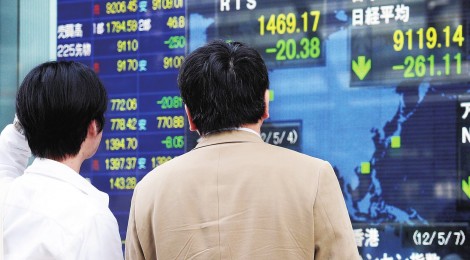
China’s stockmarket turmoil: one of the worst starts for 2016
During this second week of the new year, Chinese stockmarket continued its sharp fall up to Thursday, when both Shanghai and Shenzhen closed with relevant increases. The financial turmoil of these two weeks, which represents “just the end of the crisis’s beginning” for Michele Geraci, director of the China Economic Research Programme of Nottingham University Business School in China, was certainly not predicted by Chinese leaders. Just a few days before last’s week rout, President Xi sounded a triumphant note, praising the new prestigious position of the country’s currency among the world’s elite.
But last week will be remembered as one of the worst starts of a trading year in history, with China’s stockmarket collapsing and fuelling financial panic worldwide. Global markets have fallen by 7.1% since January 1st. In comparison with last summer’s crash, when the stock market in Shanghai capped 5100 points, with the beginning of 2016 it breached its lows with 3000-3200 points, the lowest acceptable for the central government.
To manage with its market volatility, the China Securities Regulatory Commission (CSRC) – the organism in charge of market regulation – launched a series of interventionist moves, introducing a stock index circuit-breaker system at the end of last year. During the first four days after it had been put in place, the new breaker system halted the nation’s trading twice, as it touched the fixed minimum.
 The debate about the introduction of such a regulatory system started in September last year, when the name of the emergency system was first mentioned on the media. The breaker was conceived to halt transactions any time the top 300 stocks listed in both China’s exchanges – Shanghai and Shenzhen – undergo a variation of over 5%, and to close the markets for the day in case the index is off 7%. Tumbling Chinese stocks triggered emergency closure both on Monday and Thursday last week. Apparently, the breaker which was designed to temper the market, caused instead a wave of selling and was then suspended last Friday.
The debate about the introduction of such a regulatory system started in September last year, when the name of the emergency system was first mentioned on the media. The breaker was conceived to halt transactions any time the top 300 stocks listed in both China’s exchanges – Shanghai and Shenzhen – undergo a variation of over 5%, and to close the markets for the day in case the index is off 7%. Tumbling Chinese stocks triggered emergency closure both on Monday and Thursday last week. Apparently, the breaker which was designed to temper the market, caused instead a wave of selling and was then suspended last Friday.
This has sent shock waves to markets beyond China’s borders and Chinese authorities were then blamed for fuelling panic by introducing a poorly designed circuit-breaker system. The CSRC admitted the mechanism was not working as expected, as “the negative effects are greater than the positive effects”, thus exacerbating the volatility it was meant to control. In the meanwhile, Xinhua news agency presented its new “Economic Watch” column, which framed current China’s economic difficulties as “unavoidable pains” before reform kick in bringing the desired stability.
Nicholas Brady, the economist who invented market circuit breakers, says Chinese trading halts are triggered too easily for such a volatile market and that the safety net should be revised to avoid creating panic. Eswar Prasad, professor at Cornell University and former head of the International Monetary Fund’s China division, said that “the moves taken by the Chinese government so far involved some heavy-handed and direct market intervention rather than any significant confidence-building measures.”
Chinese leaders has now introduced permanent restrictions, pushing investors to buy shares, and preventing them from selling. Yet, some analysts think this does not help solving the problem, it just scares investors away. They say China should temporarily strengthen its control on capital and stop its obsessive management of the yuan’s exchange rate, which would help the country’s financial institutions to deal with currency volatility.
As for Chinese real economy, it is not easy to say how deeply it may be affected by the crash of the stockmarket. The central government has set a target of growth rate of 6.5% in 2016 and, despite many uncertainties facing the economy, it should not be impossible for the country to achieve the goal. “The question is whether the stock market is the canary in the mine or the canary in the field,” said Edwin Truman, senior fellow at the Peterson Institute for International Economics. “We don’t really know.”




